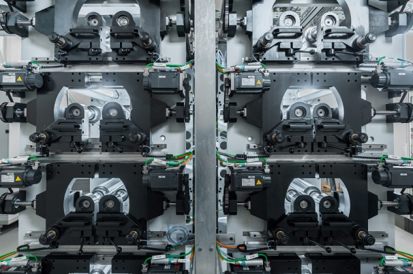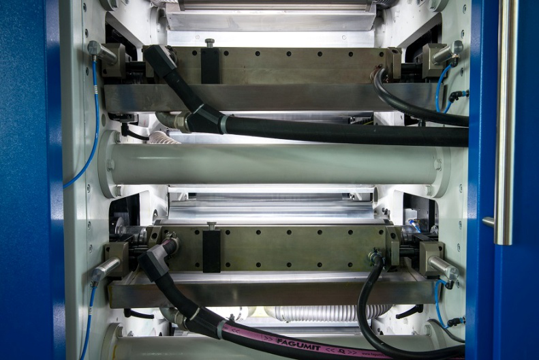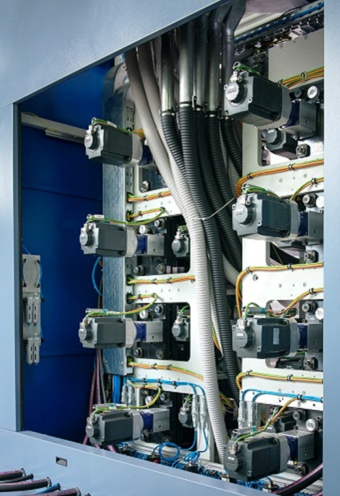Flexography is increasingly becoming the print method of choice for a wide variety of applications. The choice to choose flexographic printing is only partly made because of its economical advantages. What really drives the selection of flexo as a process is the constantly improving quality and consistency. With the introduction of gearless technology to wide web printing, a very critical element in the flexo process—register—can be controlled more effectively. The infinite-repeat capability of gearless presses also adds more versatility.
The real meaning of gearless:
A gearless design will have a servo system turning the different cylinders in the ink train at the print section. This is in contrast to the traditional system of gears being driven off of a bull gear attached to the central impression drum. Other elements include a load coupling, servomotor with feedback encoder, and a drive. In a servo system, after the motor is directed to position, the actual response is measured at the motor, load or both. Based on the difference between desired and actual position, the motor command can be accurately adjusted to minimize error.
In a true gearless press, the motor is directly integrated with the print cylinder by the use of an extremely stiff coupling. The drive can be tuned for high gain for tight registration control.


Advantages:
The two biggest advantages of a well-designed gearless flexo press are the accuracy of registration and press settings (ink and impression). This is due in part to the extreme stiffness of the print decks. The print registration accuracy of the gearless press, even through accelerations and decelerations, demonstrates this registration accuracy.
In addition, since there are no gears there is no gear inventory, gear wear, backlash, gear marking or maintenance. This is a huge efficiency and quality advantage since a good deal of the print variability in a traditional flexo system can be attributed to the gears.
A gearless press has the ability to print infinitely variable repeat lengths. This has the potential of keeping converters flexible in maintaining markets, adaptation to changing markets and the pursuit of new business.
Plates in the press can be easily inspected, worked on and washed because the decks can be racked out for these procedures. When completed, decks can be racked back in and they will go back to their original positions in regard to set register and print settings. This makes the operators’ job easier and safer.
In a true gearless press, the motor is directly integrated with the print cylinder by the use of an extremely stiff coupling. The drive can be tuned for high gain for tight registration control.
Fastest changeover:
Last, but not least, gearless technology lends itself to the quickest press changeover, which can minimize one of the biggest headaches in the flexo industry—downtime. Because there are no gears or related parts, there will be less handling and staging components to get the press ready for job set-up and take-down.
Gearless technology isn’t exactly new—but it has reached the point where it has the potential to significantly improve the consistency and quality of the flexographic printing process. This technology is but one part of what should become a complete system for the continued improvement of flexo. Training, documentation and communication, coupled with the potential of gearless press operation, will help flexo to gain market share for a wide variety of packaging needs and applications.



